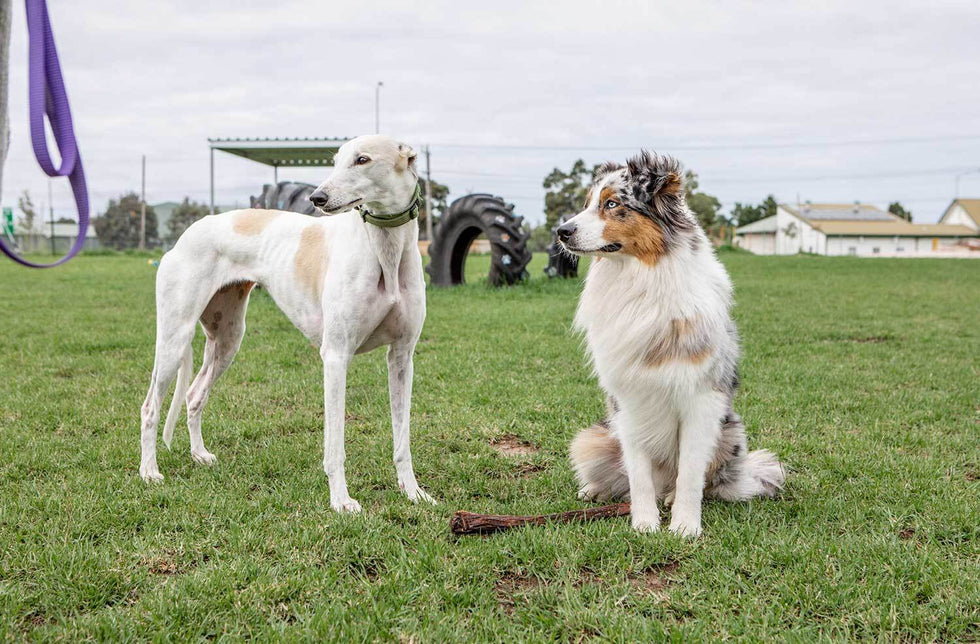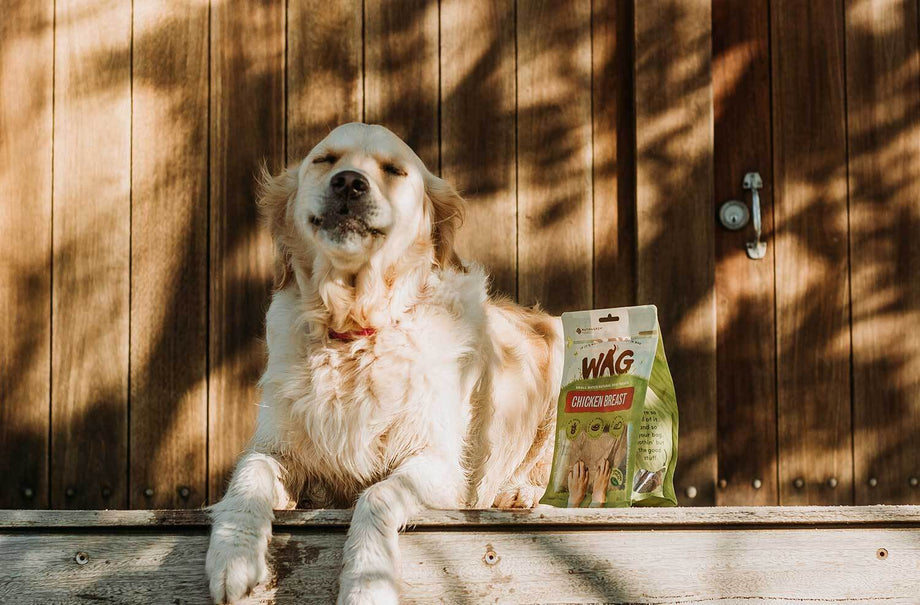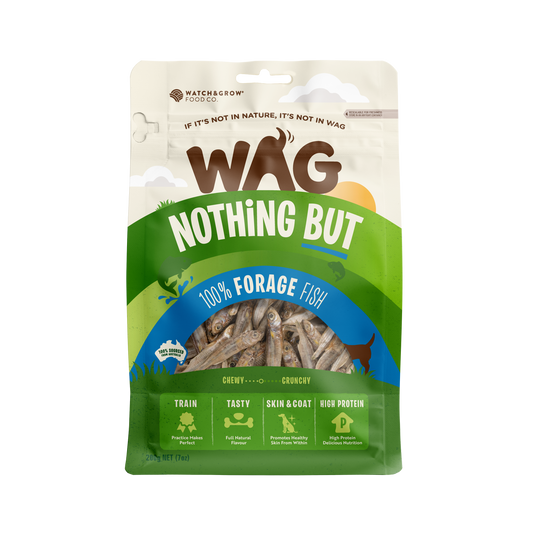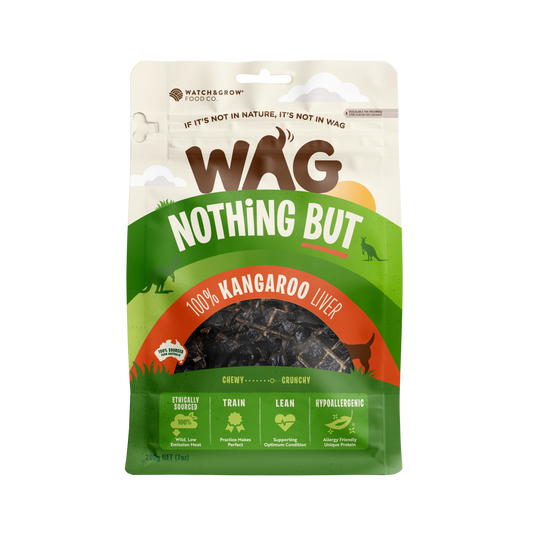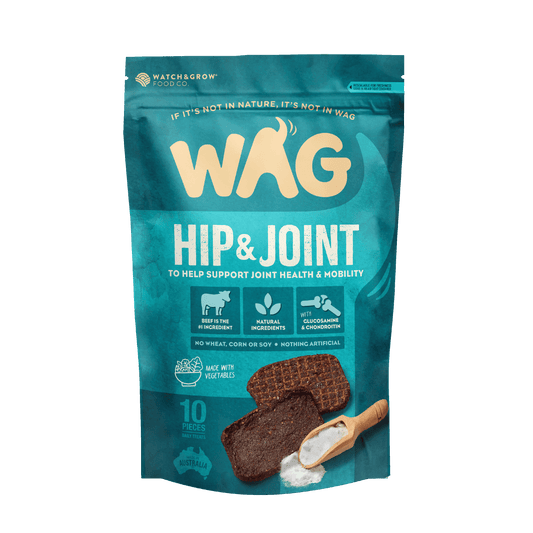As our dogs age, inevitably they will go through physical and behavioural changes. As an owner, you might be wondering what it's like taking care of older dogs. Knowing the signs of your dog slowing down, and how to address them is key. Let's discuss the signs and how you can make the transition easier for you and your canine companion. Senior dogs are incredible, so strap in for a beautiful life journey.
Older Dog Behaviour Changes
Slowing down
As your doggo ages, it is super common that their energy decreases. There are a few signs to keep your eye out for if you suspect this is happening:
- Less exploration of new areas. You might have found previously that your dog was excited to run around and explore a new place. An older dog's desire to explore decreases naturally; the older they get, the less interest they will have.
- Less self-grooming. Our furry friends will groom themselves habitually, but this habit will lessen as they age.
- Smaller appetite. A mature dog is likely to have less of an appetite due to not needing to store as much energy for later.
How do we address this?
Try taking your dog on shorter walks. An older dog won’t need incredibly long walks as they have decreased energy, and their joints may not be as limber as they used to be. Shorter 'sniff walks' are a great option, as it allows your dog to sniff around and still get a burst of exercise in, which is crucial for their physical and mental wellbeing.
You can try taking them to new parks and beaches for exciting new smells, but perhaps don’t bring them along to your 10km hike.

New sleep regimen
Dogs have a similar sleeping pattern to humans, sleeping during the night and being awake for the day. As they age that might change slightly. Here is what you can expect:
- Restlessness. Throughout the night they might get up and walk around and get restless after laying down for too long. They might not be able to sleep completely throughout the night.
- More naps during the day. Due to more interrupted nights and having less energy overall, your dog may be more tired during the day. This will result in more naps, and this isn't anything to be overly concerned about.
How to adjust to these changes
You might need to adapt their walking and feeling schedules to allow for their increased naptime. Try splitting what might have been one long walk into two shorter walks when they are up and engaged.
Disorientation
There might be times where you notice your older dog becoming more disorientated. Signs of disorientation include:
- Staring blankly at a wall. This can be a sign of boredom or cognitive dysfunction. We will discuss cognitive dysfunction later on in this blog, so make sure to stick around.
- Unsteady gait, falls, or rolling to one side. These are more abnormal symptoms, and could indicate vestibular disease in your dog - which is a complication commonly associated with older dogs. Make sure to check in with your vet if you are noticing these.
What you can do to help
Try keeping your dog active and engaged with some fun activities, especially if you are out during the day. Have some yummy long lasting WAG treats on hand for them to happily chomp through throught the day. You can also provide some interactive toys for them to engage with throughout the day.
If you are finding they are struggling to make their way around the home like they used to, consider moving their bed, toys or bowls away from crowded areas. Make sure they are easily accessible by your dog, and reduce the distance they have to walk to get a drink or toy.

Increased irritation
You may notice your mature dog is more irritable than they used to be, and may seem more bothered by things which didnt affect them before. They may snap at other dogs, especially if the other dog has higher levels of energy in comparison to them.
Ways to help
Irritability is one sign that you might need to interfere with, as you don’t want this to manifest into aggressive behaviours. Try and keep your dog as calm as possible. Give them their own space, and avoid overloading their senses with loud places and other dogs. Watch for their triggers and make sure to avoid them as best as you can.
Canine cognitive dysfunction or ‘doggy dementia’
The signs and symptoms we listed above can be symptoms of canine cognitive dysfunction. If your dog has some or all of these, it doesnt necessarily mean they have ‘doggy dementia’ but may indicate it would be worth checking in with your vet. Remember to stay up to date with their medications and vaccinations. Older dogs may need more frequent vet check ins than they did in their youthful years.
Lumps and bumps
As our dogs age, they become more prone to little lumps and bumps on their skin, and they aren't always something to worry about. Benign Lipomas - which are fatty cysts which form on the surface of your dogs skin are harmless, and generally nothing to worry about. They are quite common with dogs who may carry a little extra weight. It is definitely worth them getting looked over by a vet to make sure they are nothing serious.
There are also other types of growths to watch for; the more dangerous ones like cancerous tumours. These can appear similar to benign growths, making it even more crucial to keep your eye on them and get your doggo regularly screened. Just like with humans, a vet can perform regular skin screenings on your canine companion, and if you keep up with these it gives you the chance of detecting a troubling lump early.
Arthritis and joint issues
Arthritis is common as joints and cartilage degenerate, and it may impact your dog’s ability to move comfortably. Arthritis is treatable, and can be treated via medication from your vet. It is also crucial to keep your dog mobile, just take them on shorter, gentler walks and watch for signs that they may ge getting a little sore.
Dog treats for joint-health
Our Joint Health range is packed full of Omega-3 fatty acids, calcium and minerals that support bone and joint health. A couple of favourites are our delicious kangaroo tendons and collagen sticks.

How do I make the ageing process easier on my family and my canine companion?
Getting the help of a trusted vet
The first step is consulting with your vet if there is something you are not sure about. Skin checks, vaccinations and behavioural issues are all something that your vet will be knowledgeable about, and will be able to provide the best course of action.
Involving the whole pack
If you have younger children, you may have to educate them on the ways your dog is changing as they age, and how they can best interact with and support your dog.
Your mature dog may want their own space, so get the family involved in providing a nice comfortable environment for your furry family member.
If you are bringing a puppy into your home and introducing them to your older dog, have a read of our tips and tricks in our previous blog here!
Lots of treats
As your doggo grows older, their need for exercise or larger meals may decrease, but a love for treats will always stick around. Try our high protein, low-fat chicken breast, or our omega-3 packed forage fish to help keep your furry pal’s brain sharp!
Friends for life
As dog lovers, our love for our canine companion never dwindles. Every life stage can be wonderful, so enjoy the journey, and get the right professional help when needed.
Shop the Recipe
WAG Team
Up Next
Sending Relaxing Vibes Your Way: How To Calm A Dog In A Storm
